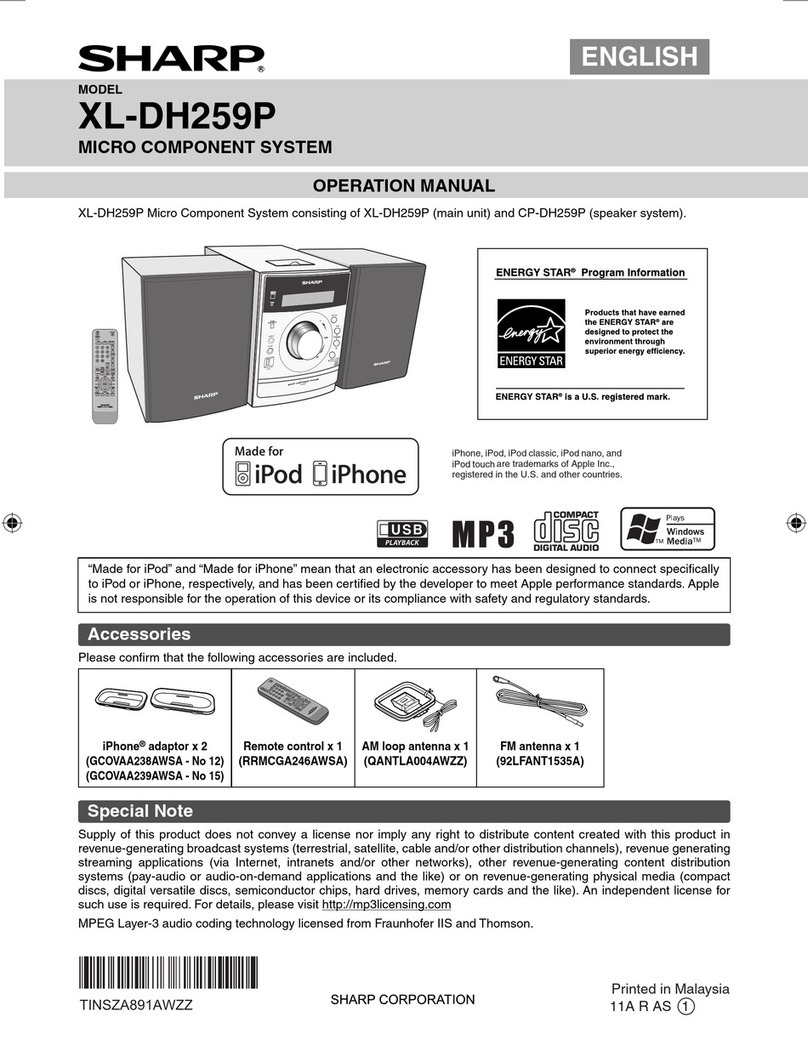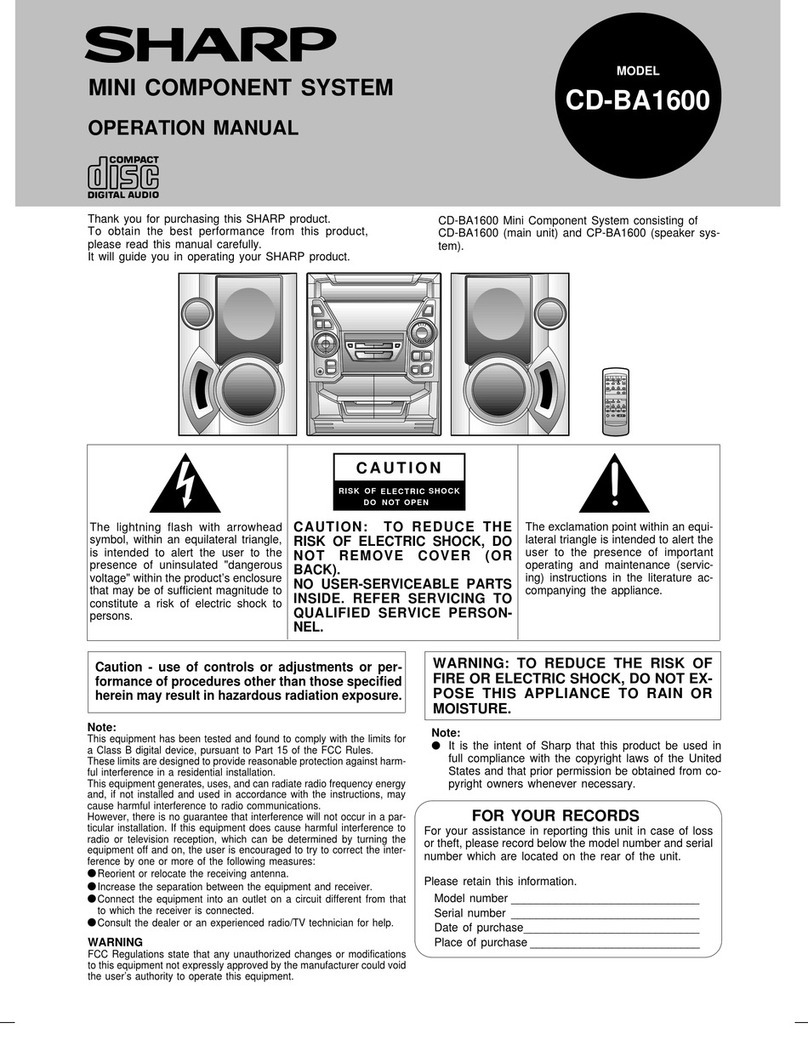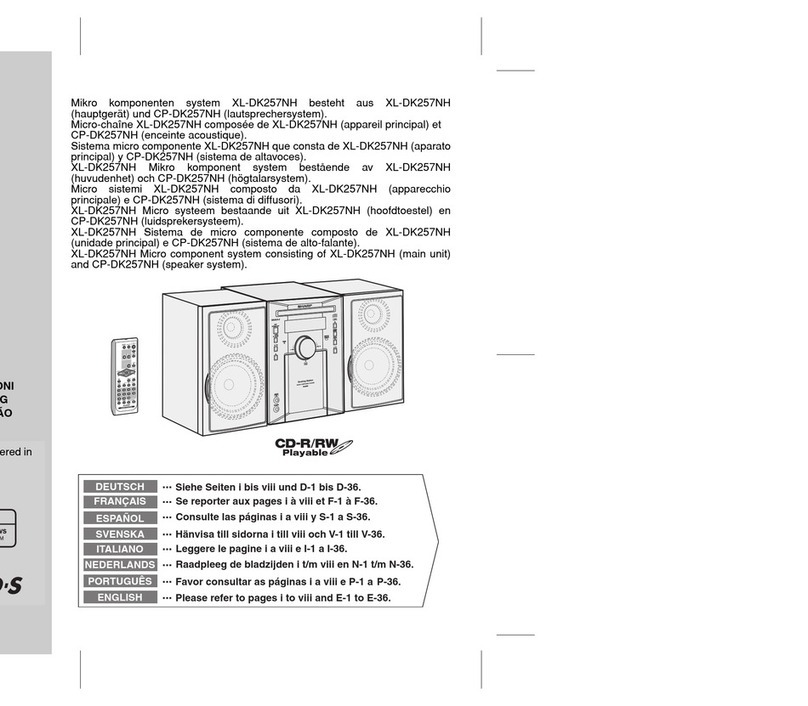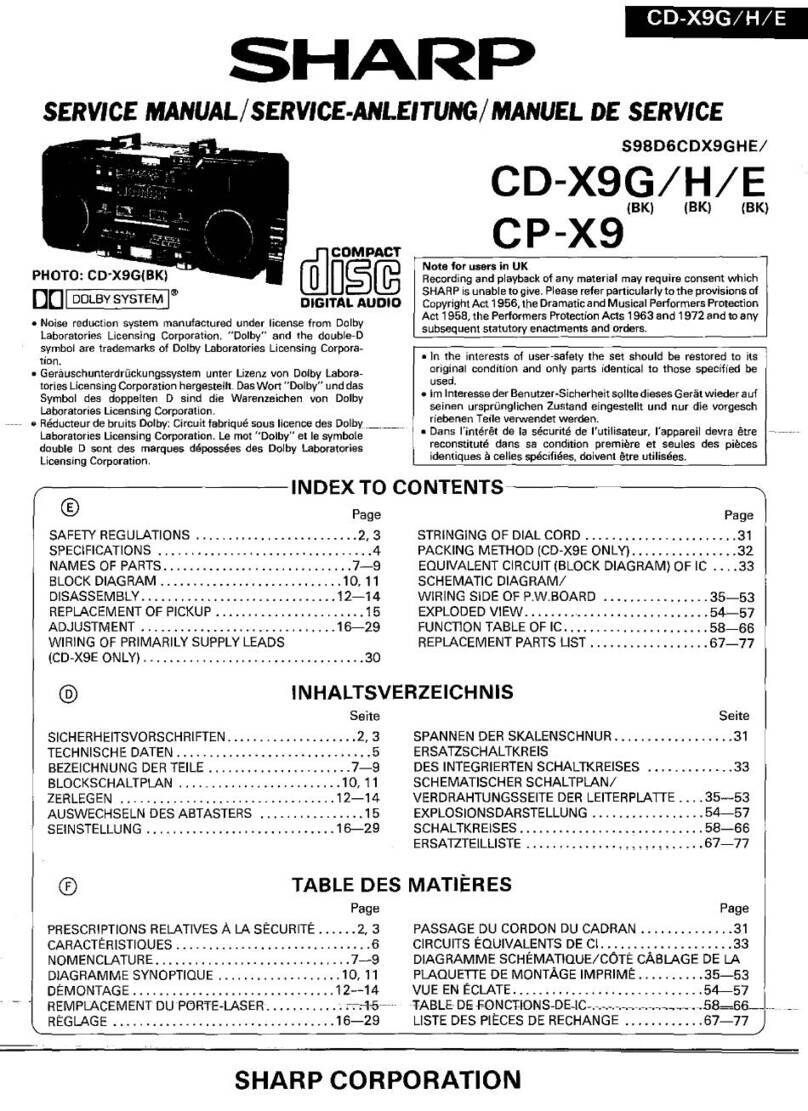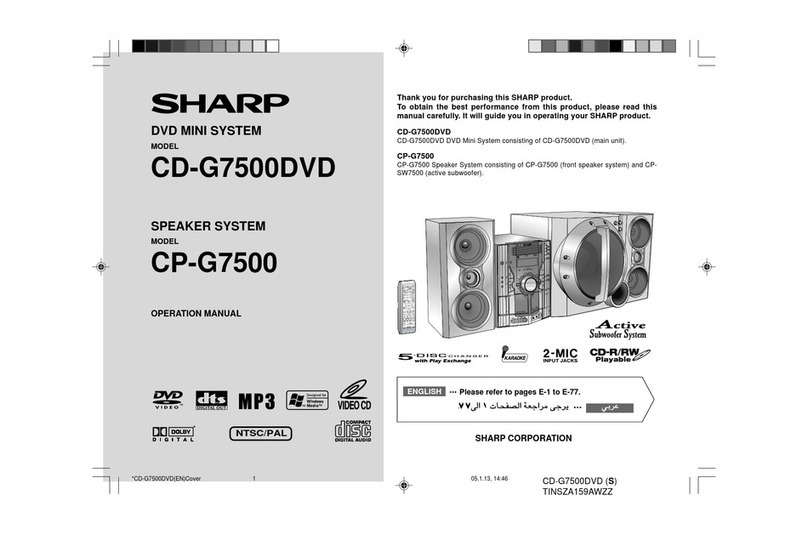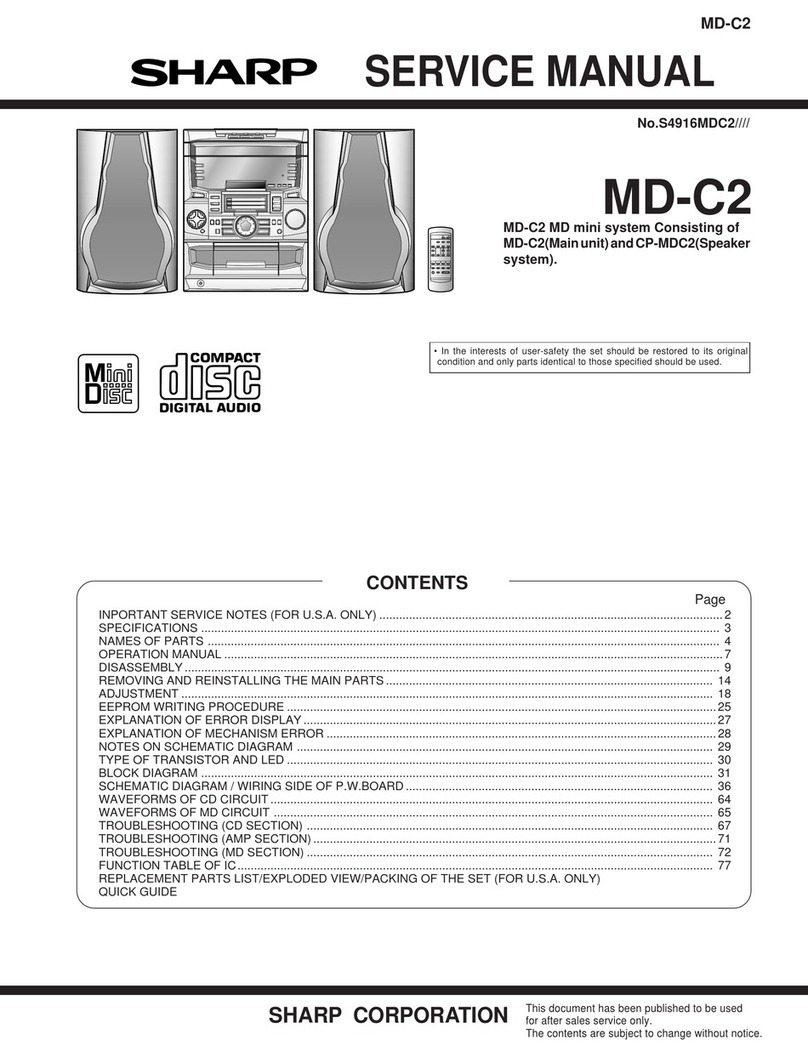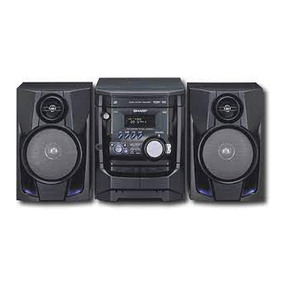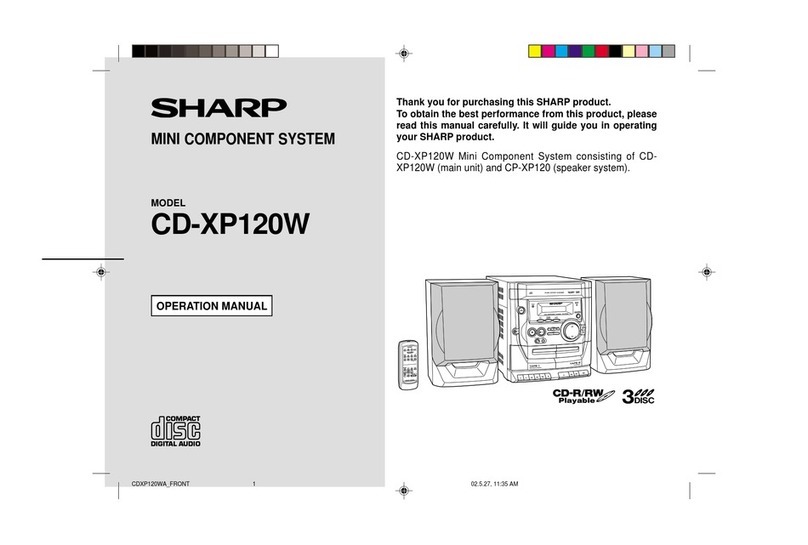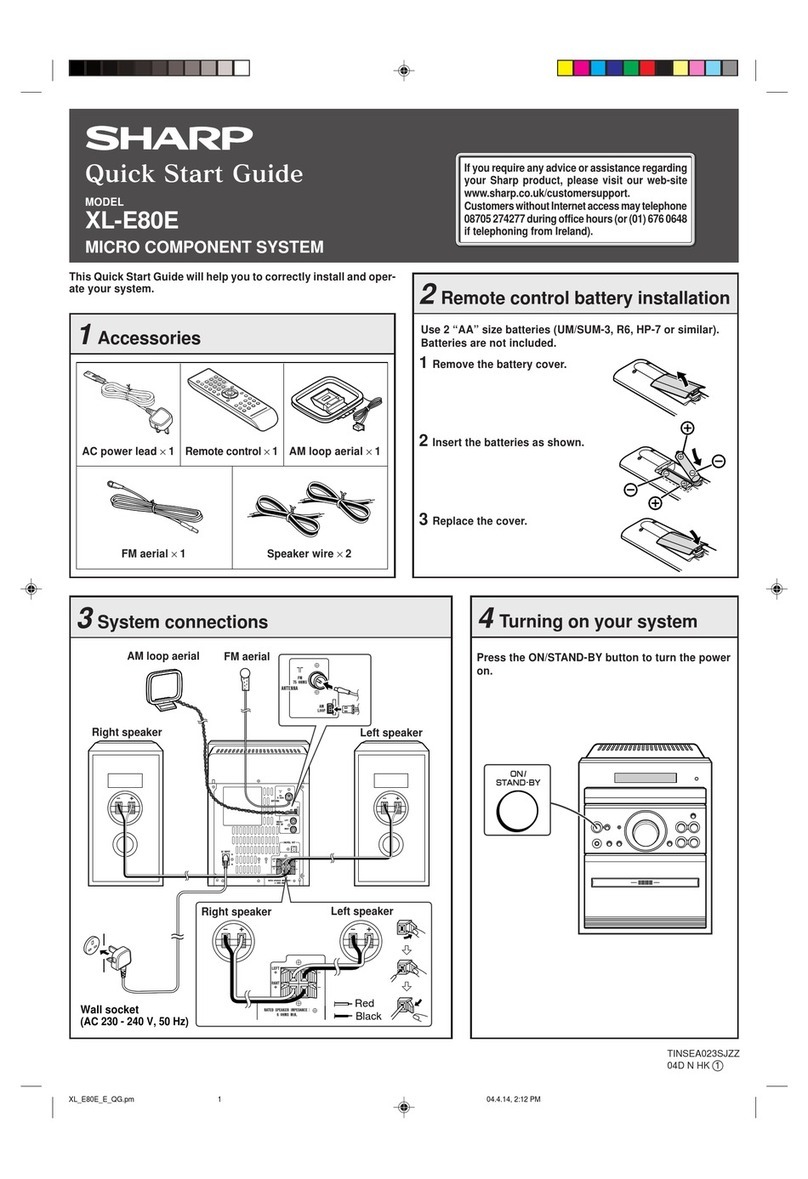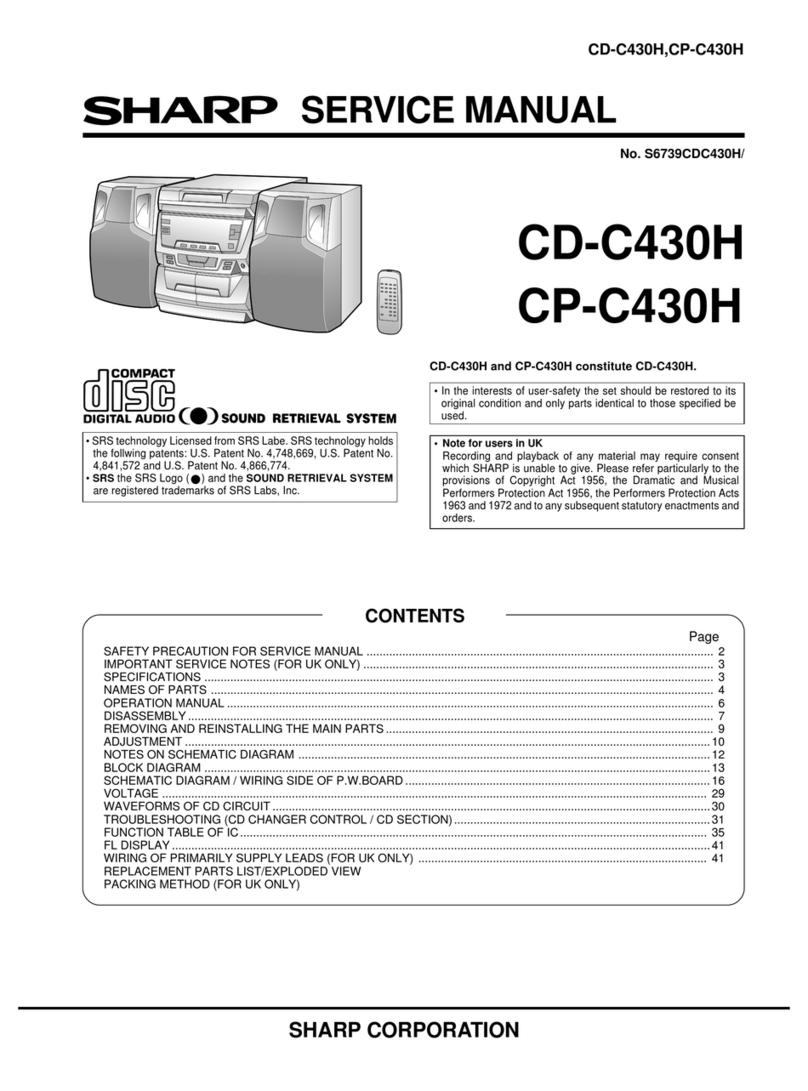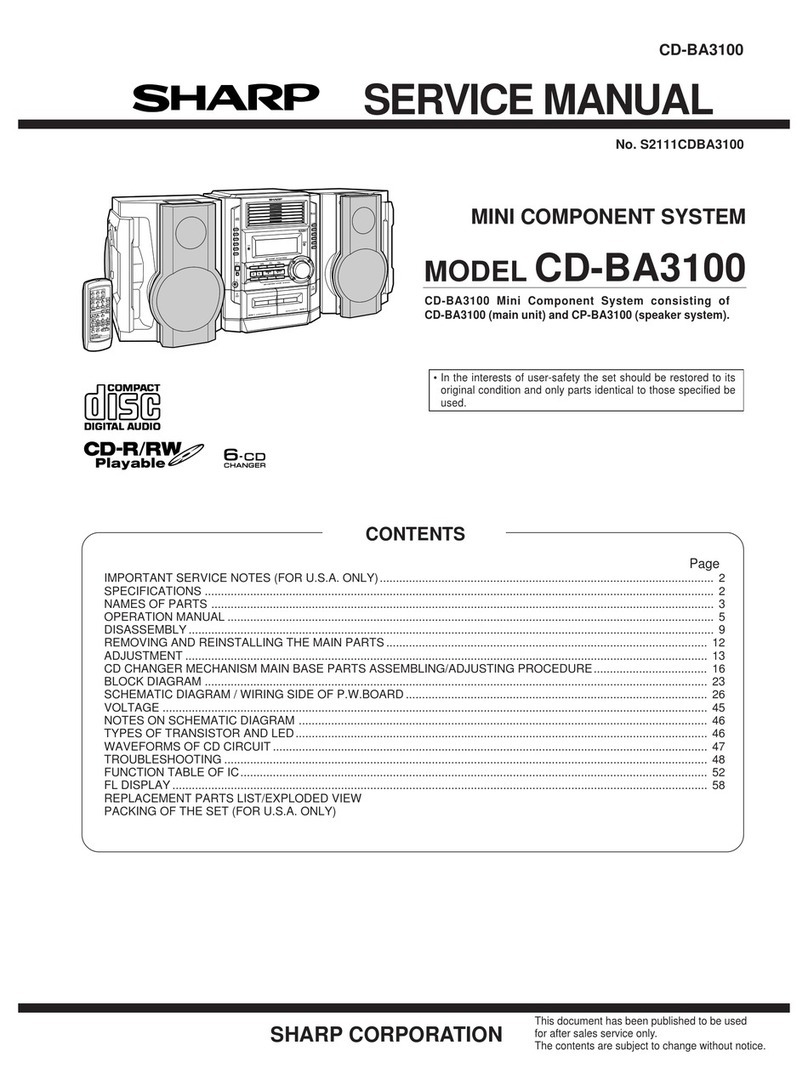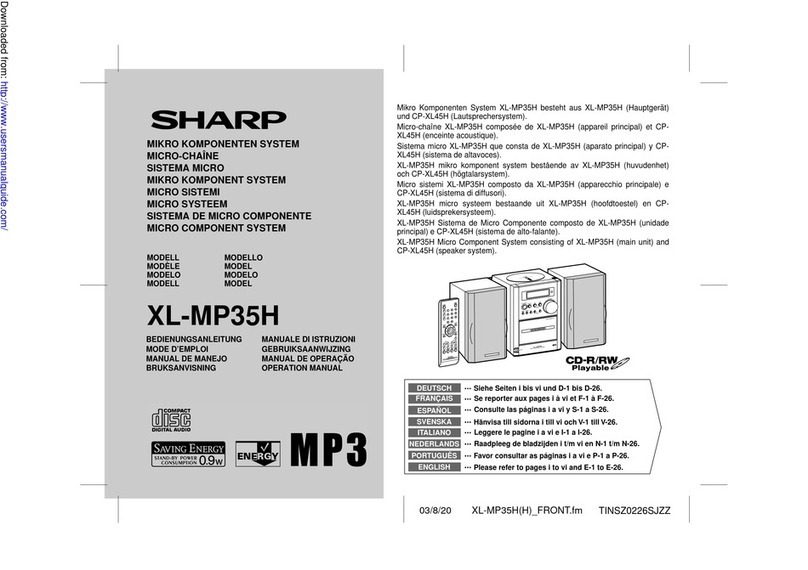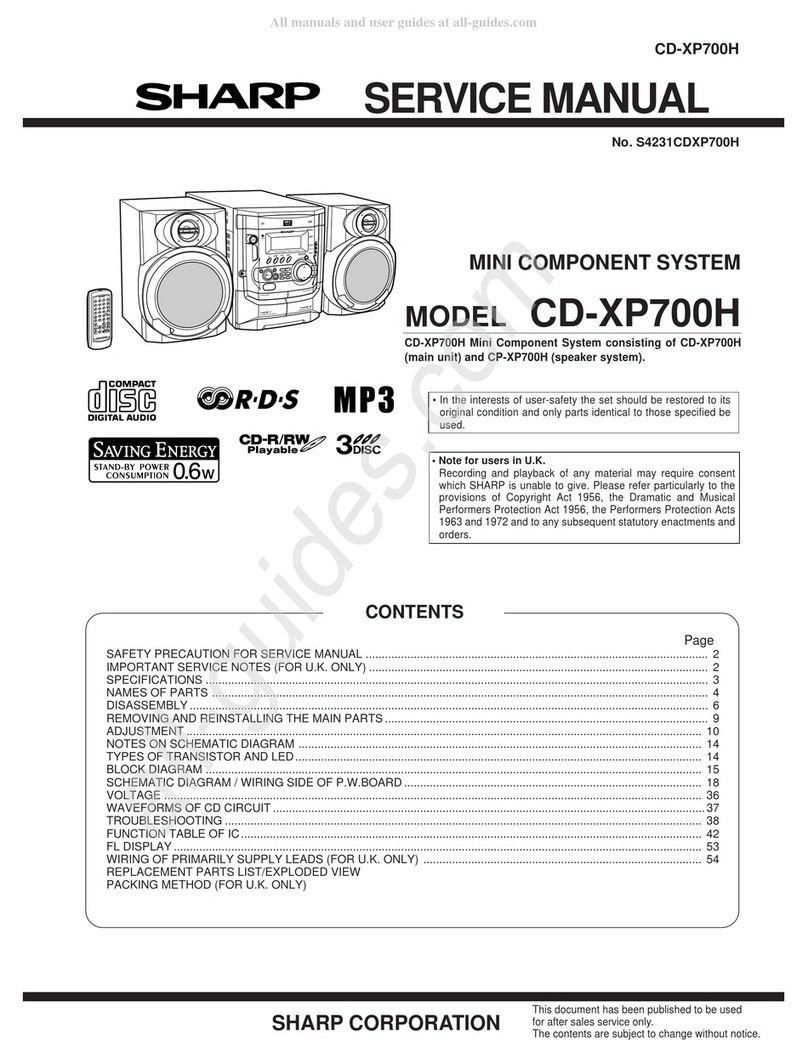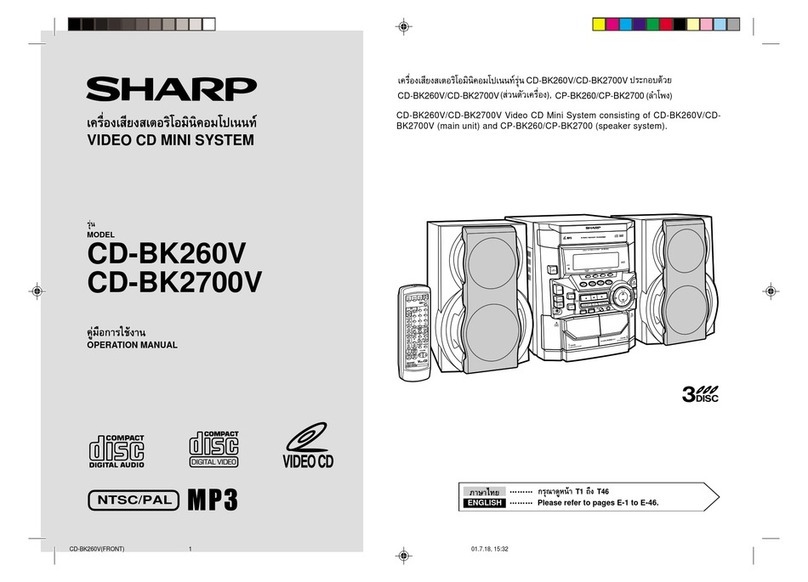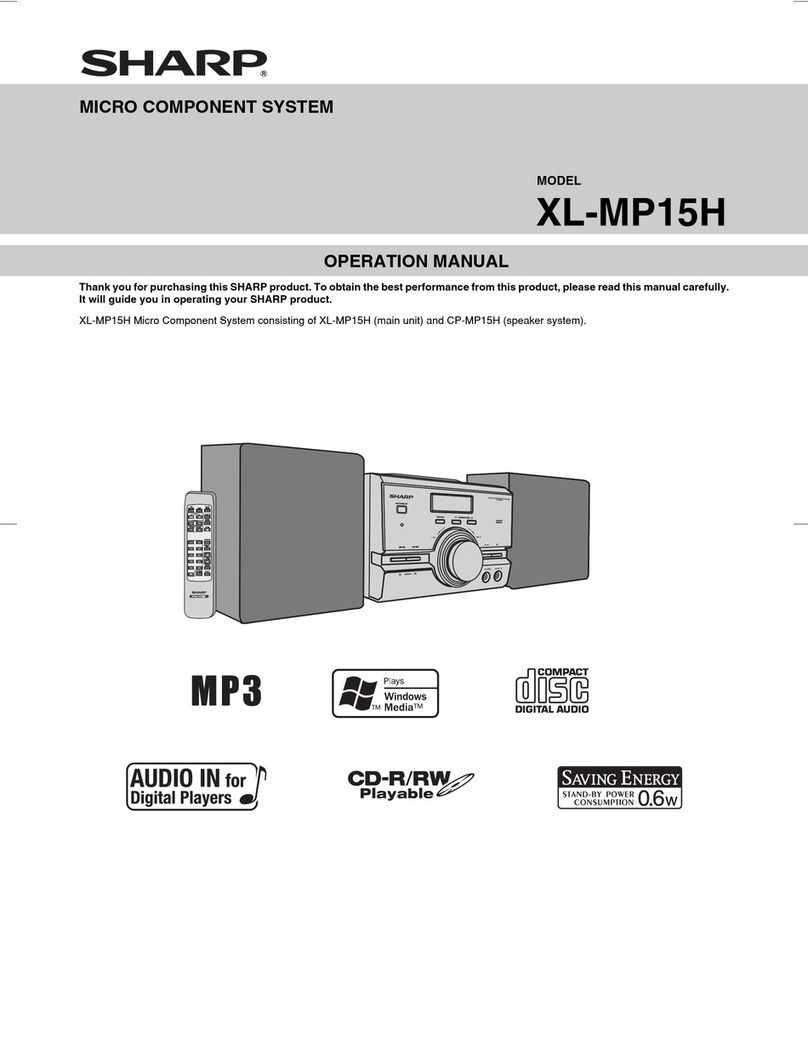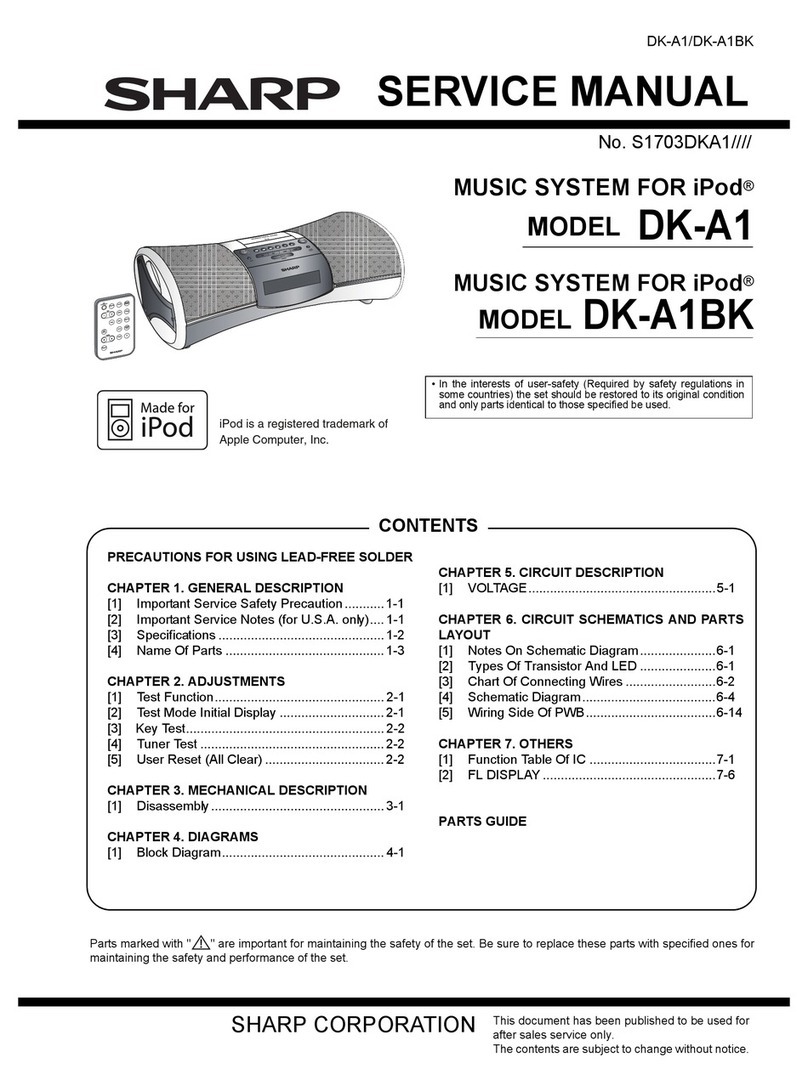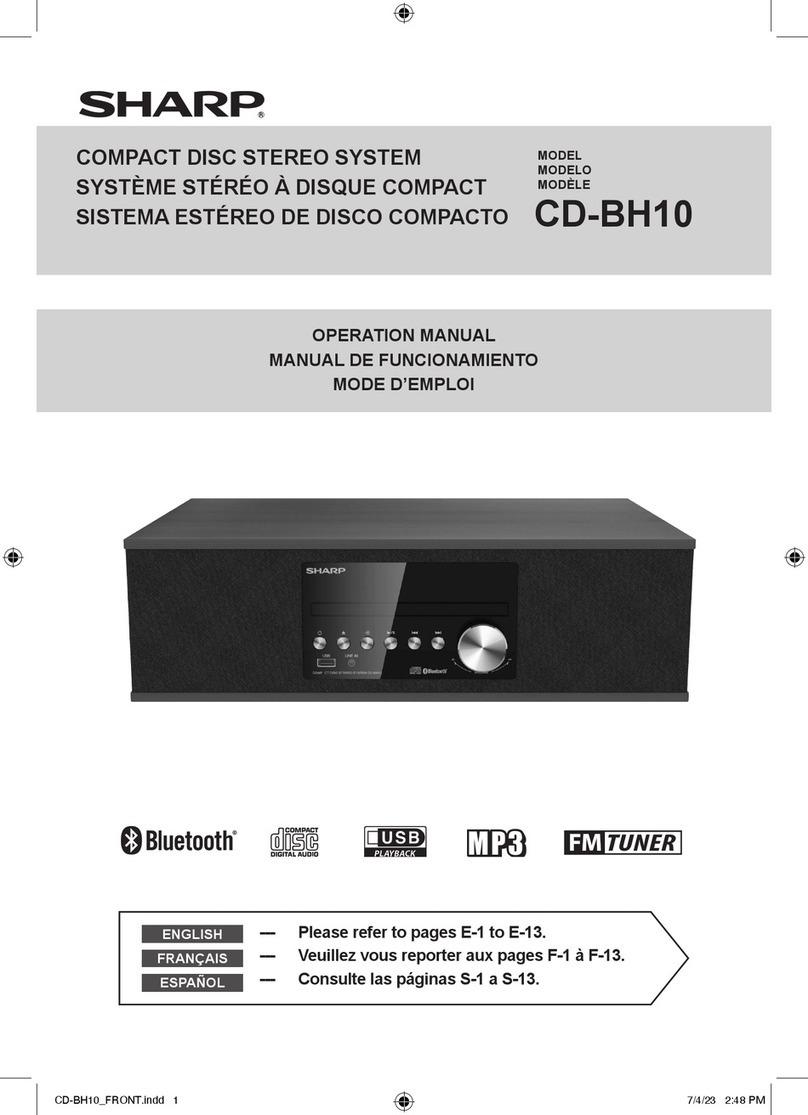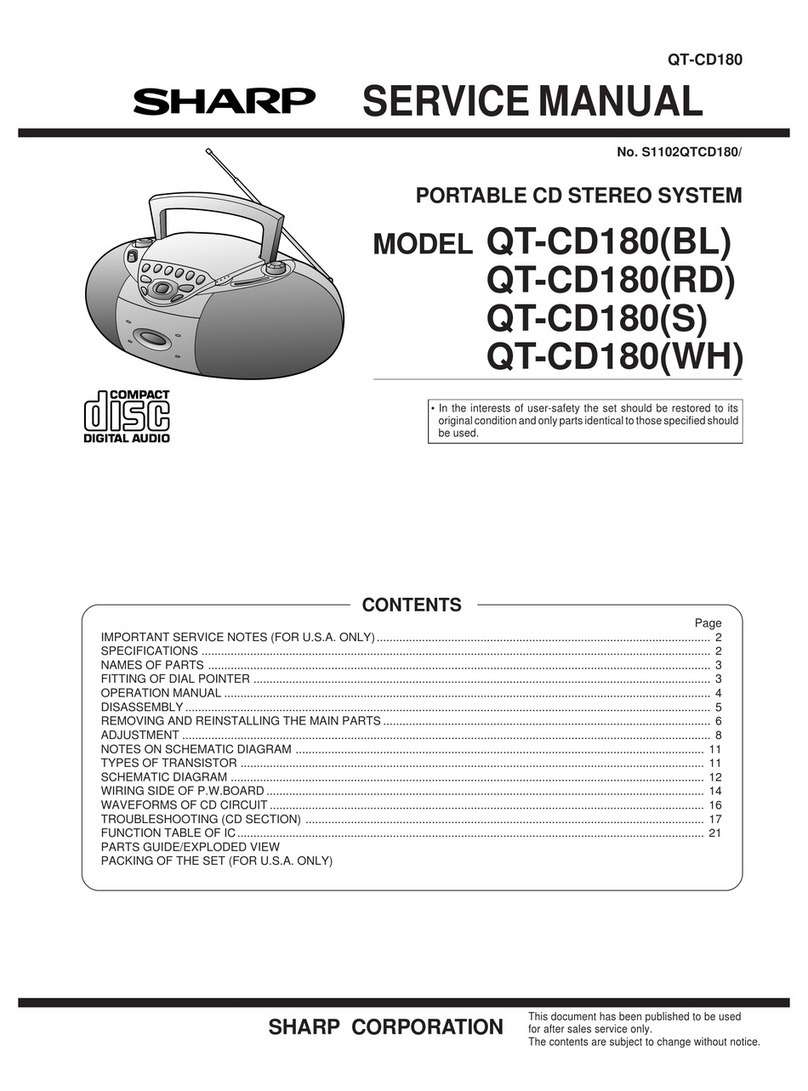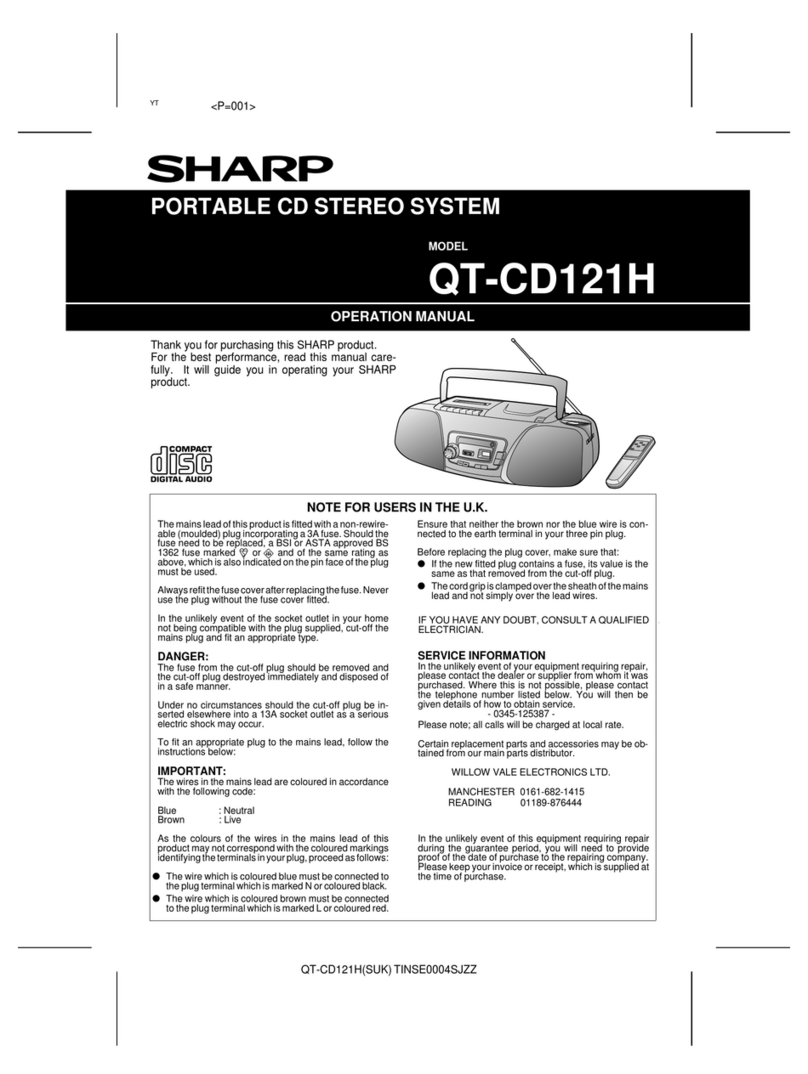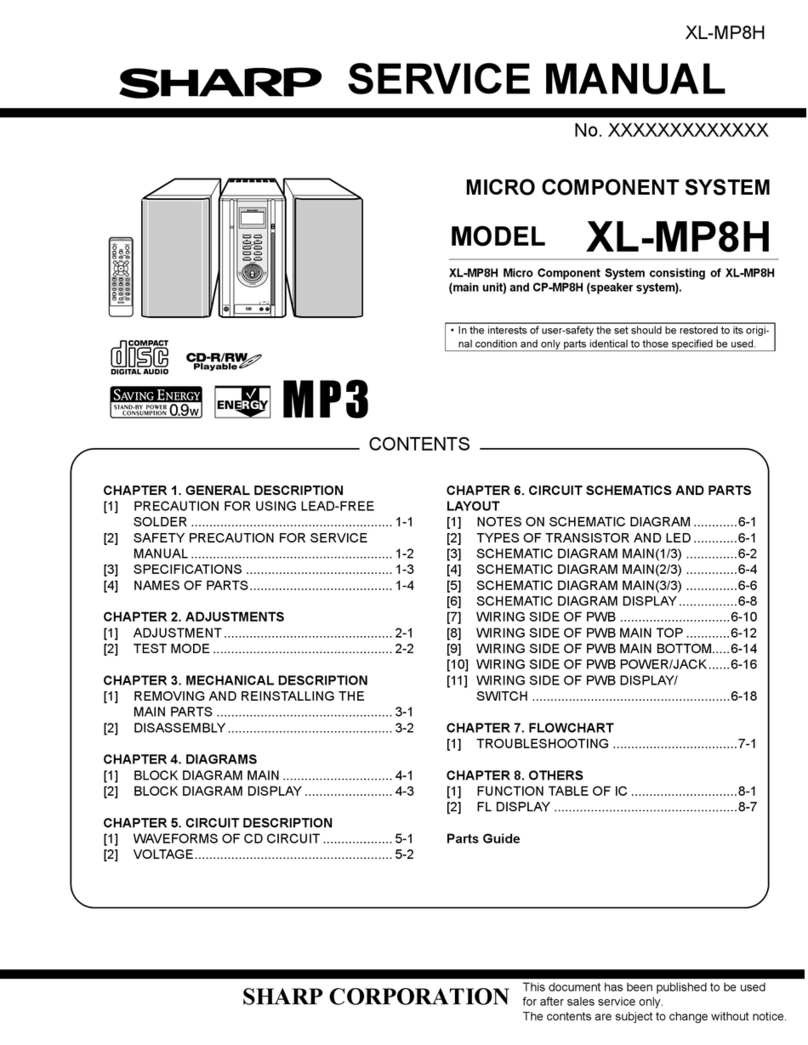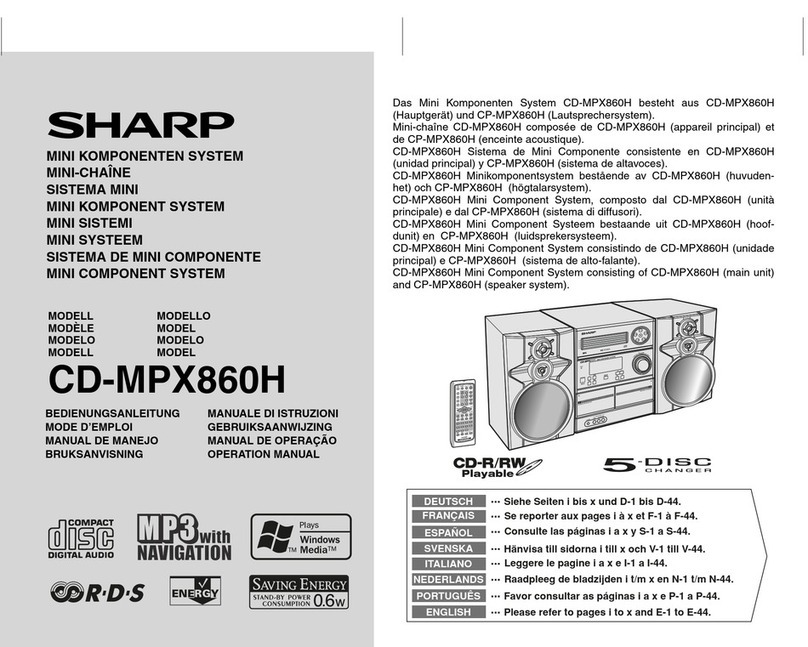XL-40H/50H
– 10 –
(Continued)
LIGHT M: Classical Musical for general, rather
than specialist appreciation. Exam-
ples of music in this category are in-
strumental music, and vocal or cho-
ral works.
CLASSICS: Performances of major orchestral
works, symphonies, chamber music,
etc., and including Grand Opera.
OTHER M: Musical styles not fitting into any of
the other categories. Particularly
used for specialist music of which
Rhythm & Blues and Reggae are
examples.
WEATHER: Weather reports and forecasts and
meteorological information.
FINANCE: Stock Market reports, commerce,
trading, etc.
CHILDREN: Forprogrammes targeted at a young
audience,primarilyforentertainment
and interest, rather than where the
objective is to educate.
SOCIAL: Programmesabout people and things
that influence them individually or in
groups. Includes: sociology, history,
geography, psychology and society.
RELIGION: Any aspect of beliefs and faiths, in-
volving a God or Gods, the nature of
existence and ethics.
PHONE IN: Involving members of the public ex-
pressing their views either by phone
or at a public forum.
TRAVEL: Features and programmes con-
cerned with travel to near and far
destinations, package tours and
travelideas and opportunities. Not for
use for announcements about prob-
lems,delays,orroad-worksaffecting
immediatetravel where TP/TAshould
be used.
LEISURE: Programmesconcernedwithrecrea-
tional activities in which the listener
might participate. Examples include,
Gardening, Fishing, Antique collect-
ing, Cooking, Food & Wine, etc.
JAZZ: Polyphonic,syncopatedmusicchar-
acterised by improvisation.
COUNTRY: Songs which originate from, or con-
tinue the musical tradition of the
American Southern States. Charac-
terised by a straightforward melody
and narrative story line.
NATION M: Current Popular Music of the Nation
or Region in that country’s language,
as opposed to international ‘Pop’
which is usually US or UK inspired
and in English.
OLDIES: Musicfrom the so-called “goldenage”
of popular music.
FOLK M: Music which has its roots in the mu-
sical culture of a particular nation,
usually played on acoustic instru-
ments. The narrative or story may be
basedon historical events or the peo-
ple.
DOCUMENT:
Programme concerned with factual
matters,presented in an investigative
style.
TEST: Broadcast when testing emergency
broadcast equipment or receivers.
ALARM: Emergencyannouncement made un-
derexceptional circumstances to give
warning of events causing danger of
a general nature.
NONE: No programme type (receive only).
TP: Broadcasts which carry traffic an-
nouncements.
TA: Traffic announcements are being
broadcast at present.
Note:
●When the unit is in the EON stand-by mode and
aprogrammeisselected, the unit will display “TI”
instead of “TP” or “TA”.
IC521 VHiLC72723M-1: RDS Circuit (LC72723M)
1 VREF Reference voltage output (Vdda/2).
2 MPXIN Baseband (multiplexed) signal input.
3 Vdda Analog power supply (+5V).
4 Vssa Analog ground.
5 FLOUT Subcarrier output (filter output).
6 CIN Subcarrier input (comparator input).
7 TEST Test input.
8 XOUT Crystal oscillator output (4.332MHz).
9 XIN Crystal oscillator input (external reference signal input).
10 Vssd Digital ground.
11* Vddd Digital power supply (+5V).
12 MODE Read mode setting (0 : master, 1: slave).
13 RST RDS-ID/RAM reset (positive polarity).
14 RDDA RDS data output.
15* RDCL RDS clock output (master mode)/ RDS clock input (slave mode).
16* RDS-ID/ RDS-ID/READY output (negative polarity).
READY
Pin
No. Port
Name Function
RDS
In this unit, the terminal with asterisk mark (*) is (open) terminal which is not
connected to the outside.
RDS (Radio Data System) OPERATION
RDS is a broadcasting service which a growing
number of FM stations are now providing. It allows
these FM stations to send additional signals along
with their regular programme signals. For exam-
ple, the stations send their station names, and in-
formation about what type of programme they
broadcast, such as sports or music, etc.
When tuned to an FM station providing the RDS
service,RDSwillappear,the station frequency (and
then the station name if sent) will be displayed.
The TP (Traffic Programme) will appear on the dis-
playwhenthe received broadcast carries traffican-
nouncements, and the TA (TrafficAnnouncement)
will appear whilst a traffic announcement is being
received.
EON will appear whilst the EON (Enhanced Other
Networks information) data is being broadcast.
Note:
When the TP and TA appear at the same time, an
announcement is being made.
When only the TA appears, an announcement is
not being made.
■Information Provided by RDS
WiththeXL-40H/XL-50H, you can display two types
of RDS service. To show them in the display, press
the DISPLAY MODE button.
Each time you press the DISPLAY MODE button,
the display will change to show the following in-
formation.
Station names commonly
known will be displayed.
"NO PS" appears if no
signal is being received.
Programme type will be
displayed.
"NO PTY" appears if no
signal is being received.
Station frequencies.
PS
(Programme Service):
PTY
(Programme Type):
Station Frequency:
Descriptions of the PTY (Programme Type)
codes, TP (Traffic Programme) and TA (Traffic
Announcement)
With the XL-40H/XL-50H, you can search for and
receive the following PTY, TP and TA signals.
NEWS: Short accounts of facts, events and
publicly expressed views, reportage
and actuality.
AFFAIRS: Topicalprogrammeexpandingor en-
larging upon the news, generally in
different presentation style or con-
cept, including debate, or analysis.
INFO: Programmeswhosepurposeistoim-
part advice in the widest sense.
SPORT: Programme concerned with any as-
pect of sport.
EDUCATE: Programme intended primarily to
educate,of which the formal element
is fundamental.
DRAMA: All radio plays and serials.
CULTURE: Programmes concerned with any as-
pect of national or regional culture,
including language, theatre, etc.
SCIENCE: Programmes about the natural sci-
ences and technology.
VARIED: Used for mainly speech-based pro-
grammes usually of light-entertain-
ment nature, not covered by other
categories. Examples include: quiz-
zes, panel games, personality inter-
views.
POP M: Commercialmusic,which would gen-
erally be considered to be of current
popularappeal,oftenfeaturing in cur-
rent or recent record sales charts.
ROCK M: Contemporarymodernmusic,usually
written and performed by young mu-
sicians.
EASY M: Current contemporary music consid-
ered to be “easy-listening”, as op-
posed to Pop, Rock or Classical, or
one of the specialised music styles,
Jazz, Folk or Country. Music in this
category is often but not always, vo-
cal, and usually of short duration.
DISPLAY
MODE

